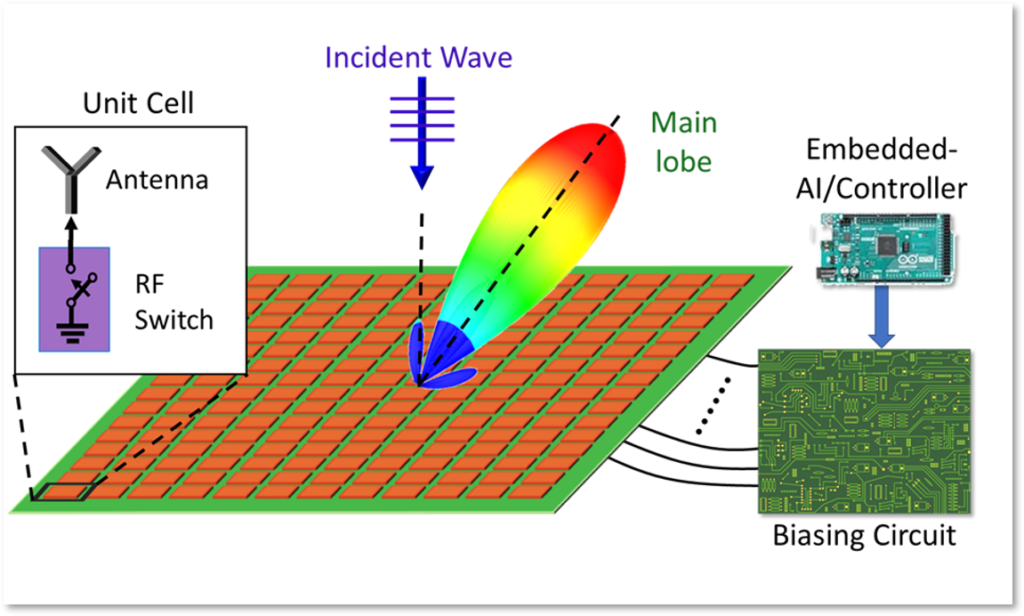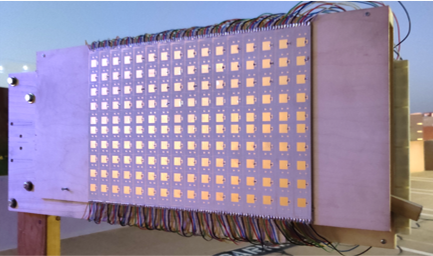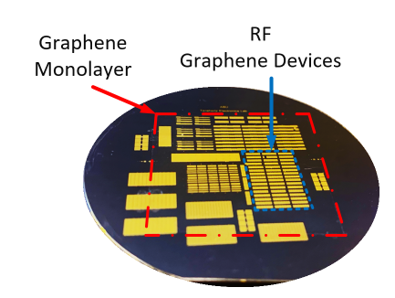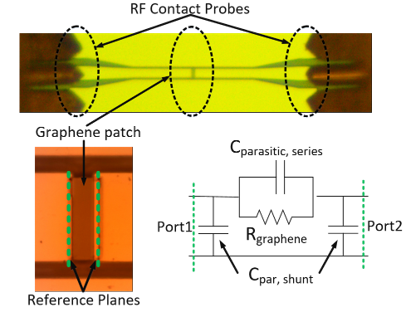We design scalable apertures for high-resolution beam-shaping and rapid electronic beam-scanning. The short wavelength of mmWave/THz waves allows medium-sized apertures to form extremely narrow beams and high gains. These are highly desirable traits for most applications in the mmWave/THz bands, including wireless communications, sensing, and imaging.
Programmable Electromagnetic Surfaces



Our technology allows the shaping of narrow beams that are much needed in millimeter wave wireless communications, imaging, and sensing applications. In particular, 5G mmWave communications is hindered by 1) signal blockage that limits coverage and 2) the requirement for ultra-dense base station networks that increase the infrastructure and maintenance costs. We implement conformable, low profile electronics for low-cost base stations and access points or as smart relays that can extend the coverage in 5G mmWave deployments. As an example, our smart surfaces can be strategically installed on building facades or posts and improve the mmWave signals for mobile users or even extend the coverage to areas that would otherwise be blocked by other occlusions.
Current technology is mostly based on an antenna array technology that results in limited gain, complex, and power-hungry systems. Our smart beam-forming surfaces are comprised of small antennas on thin substrates integrated with high-performance electronics that can transmit and receive mmWaves with high sensitivity and at longer distances. Additionally, our beamforming technology can be used in radar imaging for autonomous navigation, highly accurate localization and mapping systems, assisting living (remote vital sensing, fall detection), and security screening.
Sponsor: Intelligent Automation Inc.
THz Integrated Switches for Beamforming
We investigate the use of 2D (e.g. graphene) or thin film materials (e.g. VO2) for THz switches that can be integrated in large scale apertures for beamforming. Although such materials can have unique THz properties, the switching performance is far from ideal. What fabrication can we use to maintain the intrinsic properties of these materials? What device (switch) topologies can se use to improve THz switching for beamforming (e.g. insertion loss, isolation, speed)?


We use 2D or thin film tunable materials for the implementation of THz integrated switches on large apertures.


